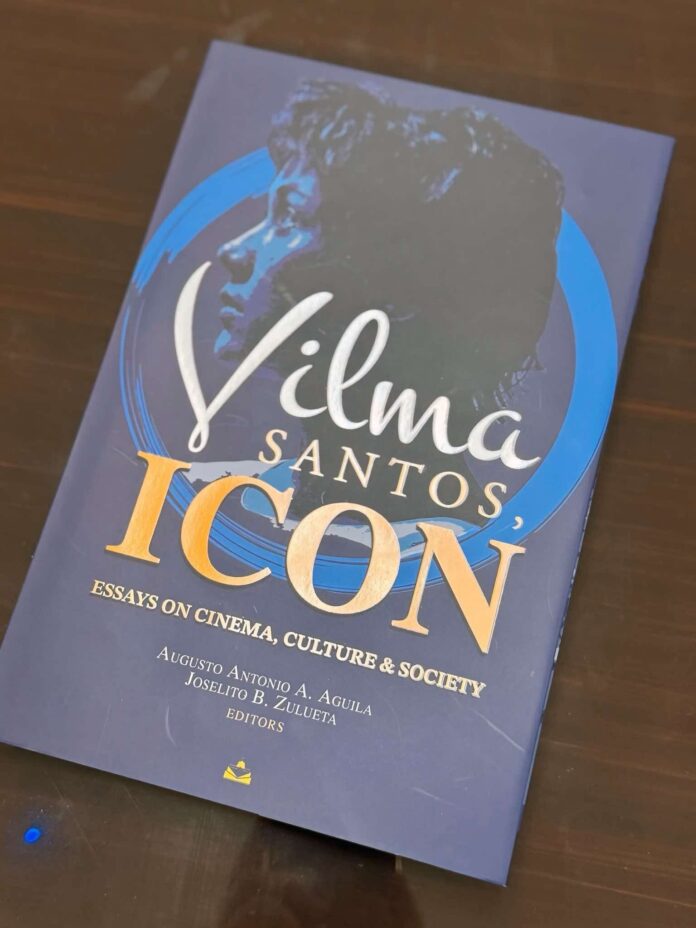How Vilmanians are fans for all seasons

I walked into one of the rooms at the University of Santo Tomas Faculty of Arts and Letters building, expecting just another usual interview. What I didn’t expect was a quick and informal masterclass on devotion and the power of fan culture.
From 20-year-old Marina and 57-year-old Ricky to 79-year-old Yolanda, I met Vilmanians—loyal fans of the country’s Star for All Seasons and now Batangas Governor-elect, Vilma Santos-Recto. Through them, I began to understand that, apart from admiration, being a fan also involves identity, legacy, and a shared sense of belonging.

The interview offered a glimpse into a growing cultural movement to cement Vilma Santos’ legacy as a National Artist—through her achievements and through books. Three major publications are currently in the works: a scholarly anthology, a coffee table book, and a comprehensive filmography. Each project highlights a different aspect of Vilma’s colorful career and the generations she has influenced. I remember watching her weekly musical variety show as a ‘90s kid.
Cultural icon
Vilma’s decades-long relevance and evolution is a rarity in showbiz. She has transformed from a child star to a respected and award-winning dramatic actress, from a box-office queen to a public servant.
Professor Augusto Antonio Aguila, who happens to be a Vilmanian (fan name) and is instrumental in writing the scholarly anthology Vilma Santos, ICON, spoke of the actress as a figure who goes beyond entertainment. In fact, he personally interacts with the actress while working on the book projects. “She was very excited. She was very thankful,” Aguila shared.

“‘Wow!,’ sabi niya, ‘the effort that you will put into it! Nakaka-touch naman!’” He added, “That’s what binds us Vilmanians. We’re really here to support her.”
Three books
First, there’s the scholarly anthology, a rich academic collection that dives deep into Vilma Santos’ body of work—from performance technique to social relevance. It’s designed not only for fans but also for students, educators, and cultural historians.
Next is the coffee table book, a dream project for many Vilmanians. This volume is photo-heavy—around 60-70 percent visuals—and tells Vilma’s life story in chapters that tackle her childhood, early films, award-winning roles, television years, political journey, and her artistic resurgence. Contributions come not just from writers and industry figures, but from fans themselves.
Lastly, the filmography book is a meticulous archive of her films, with summaries, trivia, and award citations. This is a labor of love for those who have seen her in everything from Anak to Relasyon to Ekstra.
Fans are friends and family
What struck me most was how the Vilmanians spoke of their fandom. It wasn’t passive. They didn’t just watch her movies; they lined up for hours, bought every magazine, kept newspaper clippings, and even shelled out money.
Nanay Yolanda, an almost 80-year-old fan, recalled taking days off work just to watch premieres and kept decades-old photos, magazine clippings, and even limited edition comics in pristine condition.
Across the room, everyone had their “Vilma moment.” Some met her on set. Others shared a quiet lunch with her. What was consistent was how they spoke of her—humble, generous, and attentive.
“She remembers names, even decades later,” Nanay Yolanda said. “She treats us like friends, not just fans,” Ricky added. Marina, 20, who admired “Ate Vi” since she was 7, talked about how Vilma’s charm is timeless. While many ladies her age look up to fellow Gen Zs as idols, she admires a woman who shares a wide age gap with her.
Perhaps this is why the campaign to have her recognized as a National Artist feels less like a fan initiative and more like a cultural mission. Through books, her story is being documented, studied, and celebrated for people of all ages.
Legacy continues
Just when three books look big enough, there are plans for something even bigger: a cultural center or archive in Batangas that will serve as a museum and house all memorabilia related to Vilma’s career—from photos and posters to old scripts and magazines. While still in the early stages, this physical space is envisioned as both a museum and a sanctuary for future generations of Vilmanians. Nanay Yolanda willingly shared her well-kept pieces for the structure. She said it is an honor to contribute to the initiative.
As someone who walked into that UST room with only a surface-level understanding of celebrity fan culture (I’m used to the idea of screaming fans at movie premieres who hold placards and posters!), I walked away with something more profound. I understood that fandom, at its best, isn’t about blind worship. It’s about reflection. It’s about finding a part of yourself in someone who has already walked the path you hope to take.
And in the case of Vilma Santos, it’s about honoring a woman who has not only lit up the screen but also inspired a legion of fans to dream. These fans received warmth and kindness that they take with them for years.
They say it’s better to never meet your heroes for you’re out to be disappointed. It doesn’t look that way for Vilma’s fans.
So to the true Vilmanians out there, these book projects are especially for you. As Professor Aguila said, “Kung fan ka, hindi puwedeng wala kang kopya.”
For your random thoughts, e-mail Kate at randomrepublika@gmail.com.









